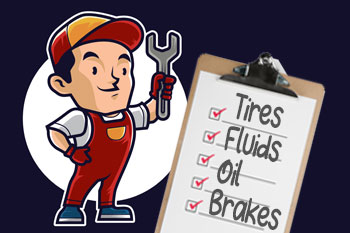DIY Car Care 101: Your Essential Maintenance Checklist
Hey fellow car lovers! Want to keep your ride running smoothly without frequent trips to the mechanic? We’ve got you covered with our comprehensive car care checklist. Whether you’re a seasoned DIY enthusiast or just getting started, these simple maintenance tasks will help you keep your vehicle in top condition.
- Check Fluid Levels: Start by checking your car’s fluid levels, including engine oil, coolant, brake fluid, and windshield washer fluid. Topping up as needed ensures optimal performance and prevents damage.
- Inspect Belts and Hoses: Look for signs of wear or damage on your car’s belts and hoses. Cracks, fraying, or leaks indicate it’s time for replacement to avoid breakdowns on the road.
- Inspect and Rotate Tires: Check tire pressure regularly and rotate your tires according to your vehicle’s recommended schedule. Proper tire maintenance improves fuel efficiency and extends tire life.
- Inspect Brakes: Keep an eye on your brake pads and rotors for signs of wear. Squealing or grinding noises, vibration, or reduced braking performance indicate it’s time for a brake inspection and possible replacement.
- Check Battery Health: Test your car’s battery regularly and clean corrosion from terminals to ensure a reliable start every time. If your battery is old or struggling to hold a charge, it may be time for a replacement.
- Inspect Lights and Signals: Ensure all exterior lights and signals are working correctly, including headlights, taillights, brake lights, and turn signals. Replace any bulbs that are burnt out or dim to maintain visibility and safety on the road.
- Inspect Air Filter: Check and replace your car’s air filter as needed to ensure proper airflow to the engine. A dirty air filter can reduce fuel efficiency and engine performance.
- Perform Regular Wash and Wax: Keep your car looking its best by washing and waxing regularly. Removing dirt and grime not only improves appearance but also helps prevent rust and corrosion.
By following this basic car maintenance checklist, you can keep your vehicle running smoothly and avoid costly repairs down the road. Happy tinkering!
Disclaimer:
The information provided in this blog is for educational and informational purposes only. While we strive to provide accurate and up-to-date content, we cannot guarantee the completeness, accuracy, or reliability of the information presented.
It is important to understand that car engine and body repairs can be complex and potentially hazardous tasks. We are not professional auto mechanics, and the DIY techniques and tips provided should be used at your own discretion and risk.
We strongly advise consulting with a qualified and certified auto mechanic before attempting any repairs or modifications on your vehicle. Professional mechanics have the training, experience, and specialized equipment necessary to diagnose and address automotive issues safely and effectively.
By using the information presented in this blog, you agree that we shall not be held responsible or liable for any damages, injuries, or losses that may occur as a result of DIY car repairs. Always prioritize your safety and the well-being of your vehicle by seeking professional guidance when needed.
Amazon Affiliate Marketing Disclaimer: As an Amazon Associate, I earn from qualifying purchases. This means that if you click on an Amazon link included in this blog and make a purchase, I may earn a commission at no additional cost to you. This helps support the maintenance of this blog and allows me to continue bringing you valuable content on DIY auto repairs. Thank you for your support!

